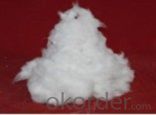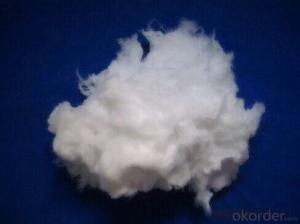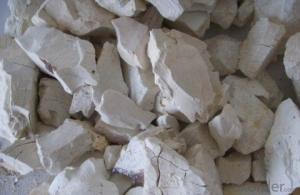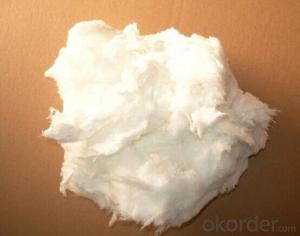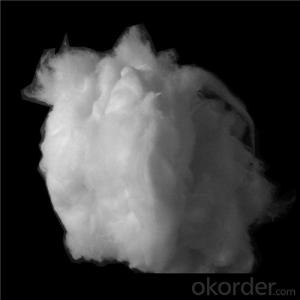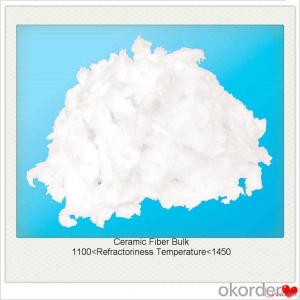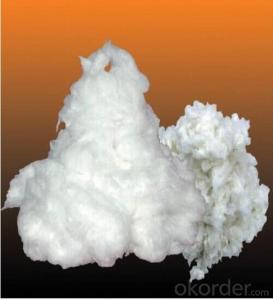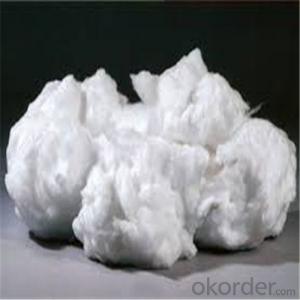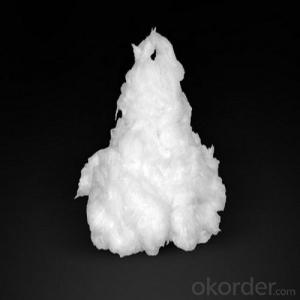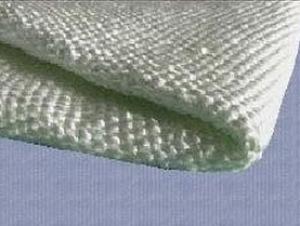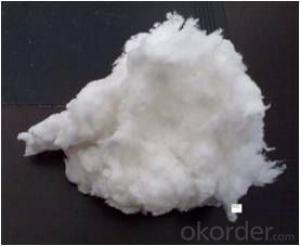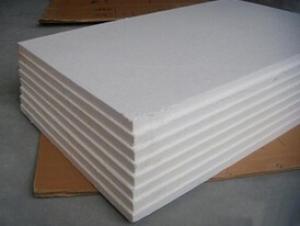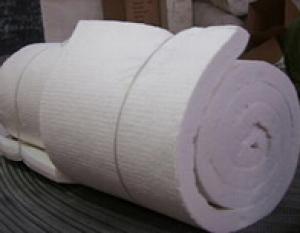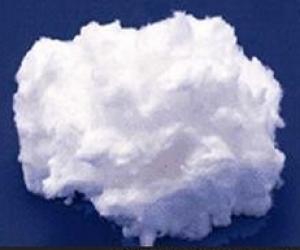Ceramic Fiber Bulk Lubricated with Oil - Refractory Grade
- Loading Port:
- Shanghai
- Payment Terms:
- TT OR LC
- Min Order Qty:
- 800 kg
- Supply Capability:
- 10000 kg/month
OKorder Service Pledge
OKorder Financial Service
You Might Also Like
Refractory ceramic fiber bulk is manufactured from high purity raw materials:alumina powder, silica sand for the high temperature grades and zircon sand is also used. The ceramic mixture is heated in an electric furnace to temperatures in excess of 2000C and the stream of molten material is drawn into fibres by eithter spinning or blowing. Ceramic fiber bulk are loose, long and flexible with high refractory properties, and are produced by "blown" and "spun" processes. Ceramic fiber bulk and chopped fibres show a high temperature stability and an outstanding chemical stability is complemented by their resistance to oxidation and reduciton . Ceramic fiber bulk and chopped fibres are availabe in a variety of length. They are used as the base for the production of blanket, moldable, and vacuum formed board and shaped products.
Application
Manufacture textiles
Chimney fill
Expansion joint packing
Wet process feedstock
Filtration media
Mouldables/mastics feedstock
ladle insulation
Technical Data Sheet
shot content (%) diameter ≥0.212mm : ≤15
Fiber diameter(um) :2-4
Standard Specification
Classification temperature: 1260C,1430C
Type: long fiber, chopped, lubricated
Packing: 10 kg/carton, 20kg/bag
- Q: What are the main differences between an ordinary furnace and a ceramic fiber furnace?
- Service life: ordinary furnace quenching, sudden heat, easy to cause blasting chamber or cracking, shorten service life, ceramic fiber furnace without blasting chamber or crack possible.There are two common practices in ceramic fiber furnaces:The first is a larger furnace, which is fixed on the furnace wall with ceramic fiber modules;The second is a small furnace, the manufacture of abrasives, direct pouring, or with punch milling machine processing ceramic fiber board.
- Q: Should the ceramic fiber furnace be compacted?
- In view of the large industrial furnace, the ceramic fiber module can be chosen to be refractory, heat insulated and insulated, and the ceramic fiber module is firmly fixed on the furnace wall by the parallel mounting method, which is more reliable
- Q: What is the difference between the ceramic fiber cloth and the high silicon oxygen cloth?
- Ceramic fiber is a short fiber that needs to be reinforced and toughened by other objects. It is generally toughened by glass fiber and stainless steel wire. The high silicon oxygen is long fiber, no need to toughen by other objects. The short-time high silica resistance to high temperature, Suzhou Dexin ceramic high silica cloth of silica content is greater than or equal to 96% temperature up to 1700 DEG C.
- Q: Glass fiber cotton, aluminum silicate cotton, rock wool, what's the difference between these three?
- Name: Cotton aluminosilicate ceramic fiber cotton, is an almost pure inorganic fiber, formed by blowing process production process or thrown silk spray, is a kind of low thermal conductivity, low heat capacity; high strength, high tear resistance, excellent machining performance. Aluminum silicate insulation material has become the best industrial furnace lining wall insulation materials, completely replace refractory bricks.
- Q: Aluminum silicate ceramic fiber cotton smoke will cause pneumoconiosis?
- Most of the aluminosilicate ceramic fiber cotton with high quality bauxite, high purity alumina, silica, zircon sand as raw materials, by blowing or swinging method generated by fiber, cotton collector or settlement device assembled into bulk fiber, also known as cotton fiber. Therefore, according to its composition, after inhalation, will lead to pneumoconiosis.
- Q: What is the diameter of the ceramic fiber? How to mix?
- Fiber length: fiber rejection is longer, the rejection of silk fiber is generally 150-250mm, spinneret fiber is generally 100-200mm;
- Q: Is aluminum silicate fiber poisonous?
- Ceramic fiber loose cotton is a kind of fluid which can melt high purity clay clinker, alumina powder, silica powder, chrome sand and so on in the industrial electric furnace.
- Q: What is the good heat insulation effect of glass fiber and aluminum silicate fiber, what are their respective advantages and disadvantages?
- Advantages and disadvantages of aluminum silicate fiber: high temperature insulation, heat preservation, fire resistance, noise reduction, insulation, light weight. Disadvantages: compressive resistance, bending force is relatively poor, easy to produce dust, waterproof performance is not very good.
- Q: Aluminum silicate needle carpet and ceramic fiber insulation performance of the good
- Aluminosilicate ceramic fiber has two different production processes, respectively, the rejection process and the blowing process. The carpet produced by the spinning process has long fiber length, high tensile strength and wide range of use. The blanket produced by blowing process is short in length and easy to break, and the scope of application is relatively narrow.
- Q: Ceramic fiber material fire shutter door how many square?
- Now there are two kinds of rolling to use ceramic fiber: a called inorganic super fire shutter (commonly known as the double track curtain), the curtain surface is glass fiber cloth + ceramic fiber cloth + ceramic fiber blanket + aluminum foil cloth, one is WFJ (glass fiber cloth + ceramic fiber cloth + glass fiber cloth).
Send your message to us
Ceramic Fiber Bulk Lubricated with Oil - Refractory Grade
- Loading Port:
- Shanghai
- Payment Terms:
- TT OR LC
- Min Order Qty:
- 800 kg
- Supply Capability:
- 10000 kg/month
OKorder Service Pledge
OKorder Financial Service
Similar products
Hot products
Hot Searches
Related keywords



